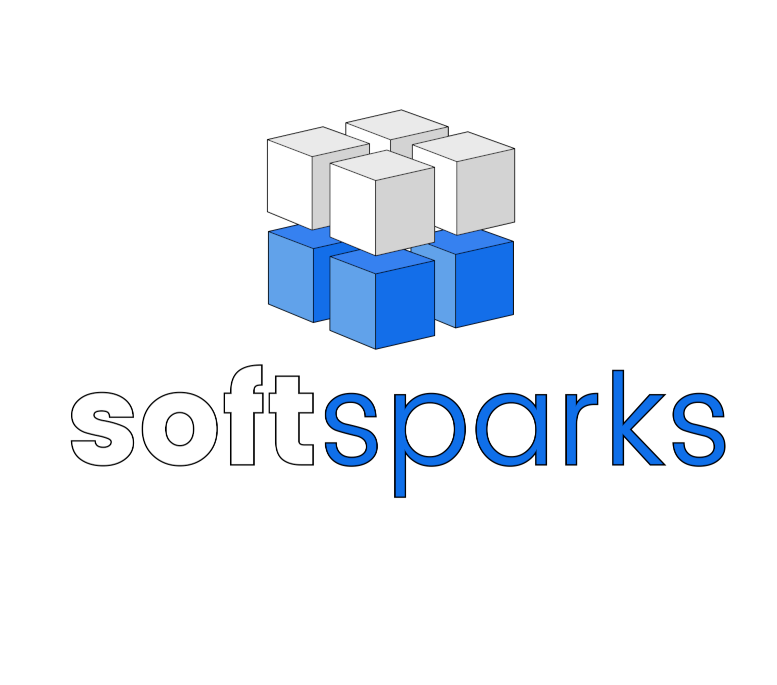Are you wondering why everyone is suddenly talking about no-code automation? Are you fed up with time-consuming tasks and looking for ways to finally simplify your everyday life - without programming knowledge? Maybe you've heard of tools that you can use to automate processes, but don't know if it's really that easy. In this article, you'll find out what's behind the hype, how no-code automation works and how you too can benefit from it - without any prior technical knowledge.
Table of contents

What is no-code automation?
Automation of processes without programming knowledge
No-code automation means that you can automate recurring tasks and processes without having to write a single line of code. This means you don't need any special training or experience in programming. Instead, you rely on simple operation and clear structures. Whether it's sending invoices, sorting data or sending emails automatically - you can do it all with just a few clicks. This allows you to concentrate on the important things and save time on routine tasks.
Use of visual tools with drag-and-drop
No-code automation uses visual tools that usually work with a drag-and-drop interface. You see all the modules and actions right in front of you and can simply put them together using the mouse. This makes operation particularly clear and intuitive. You don't have to type in any commands or search through complicated menus. Instead, you drag the desired functions to the right place and link them together. This creates your automated process step by step.
With the increasing spread of automation solutions, the AI training obligation for employees.
Accessible for everyone - not just developers
No-code automation is for everyone, not just developers or IT professionals. Anyone who can operate a computer can use these tools. This makes them particularly attractive for small companies, self-employed people or teams without their own IT department. You can build, test and change your own processes without having to rely on external help. This gives you more control over your processes and allows you to react quickly to new requirements.
How does no-code automation work?
Use of prefabricated modules
With no-code automation, you don't have to start from scratch. Most tools offer you ready-made modules that cover typical tasks. These include, for example, blocks for sending emails, moving files or updating data in a table. These blocks are designed so that you can use them directly without having to worry about technical details. This saves time and lowers the inhibition threshold for getting started with automation in the first place. You simply select what you need and combine the modules according to your requirements.
A practical example of no-code workflows is the Automation with n8nwhich enables complex processes without programming.
Compile workflows at the click of a mouse
The heart of No-Code Automation is the compilation of workflows at the click of a mouse. You build your workflows by simply arranging and linking the desired building blocks with the mouse. This is usually done in a clear interface in which every step is clearly visible. This means you can always see what is happening and when. If your requirements change, you can adapt the workflow with just a few clicks. No technical knowledge is required because everything is visual. This keeps the automation flexible and easy to understand.
Simple logic instead of complicated programming
No-code automation relies on simple logic that everyone understands. You can incorporate conditions such as "If this happens, then do this" without having to know any programming language. These so-called if-then rules can be defined using a selection menu or checkbox. You don't need complicated loops or nested commands. As a result, everything remains clear and you don't lose track, even if your workflow becomes a little more extensive. The simple logic ensures that you see results quickly and can concentrate on the essentials.
Who benefits from no-code automation?
Marketers who want to automate recurring tasks
As a marketer, you are constantly dealing with repetitive tasks: Sending out newsletters, managing leads, scheduling social media posts or creating reports. No-code automation helps you to automate precisely these processes without having to deal with complicated technology. For example, you can specify that new contacts are automatically added to a mailing list or that data from forms flows directly into your CRM system. This leaves you more time for creative campaigns and strategic planning instead of being bogged down with manual processes.
Business owners who take processes into their own hands
As a business owner, you want to keep an eye on your processes and react flexibly to changes. With no-code automation, you can design, adapt and optimize processes yourself - without any external IT support. This means you are not dependent on others when something needs to change. Whether it's invoicing, making appointments or order processing: with just a few clicks, you can automate recurring tasks and focus on growing your business. This saves you time, reduces sources of error and gives you full control over your business processes.
Content creators who want to focus on content instead of technology
When you create content, you want to focus on your ideas and content and not on technical details or routine tasks. No-Code Automation relieves you of many tedious steps: You can schedule publications, automatically share content on different platforms or receive notifications for new comments - all without any programming knowledge. This leaves more room for creativity and less stress due to technical hurdles. You can use your time for what really matters: producing high-quality content.
Typical use cases
Automatic sending of e-mails after form entries
Many people know the problem: you collect inquiries or registrations via an online form, but following up by email takes time every time. With no-code automation, you can specify that an email is sent automatically after each form entry. This can be done without any programming - you simply select the appropriate trigger event (form submitted) and link it to an email action. This way, interested parties immediately receive a confirmation or further information without you having to follow up manually. This not only saves time, but also makes a professional impression on your contacts.
Synchronization of data between different tools
Data often ends up in different places: Entries in the CRM, new contacts in the newsletter list, orders in the store system. Instead of transferring everything manually, you can use No-Code Automation to automate synchronization between your tools. You create a connection between the applications so that data is automatically transferred and kept up to date. This works between forms, spreadsheets, project management tools or email marketing platforms, for example. This avoids duplicate data entry, saves time and reduces errors that can quickly occur when working manually.
Planning and publishing social media posts
Social media takes time - especially if you want to share content on multiple platforms. With no-code automation, you can schedule your posts in advance and have them published automatically. You create the desired content, set the times and the tool takes care of the rest. Many platforms can be connected directly so that a post appears on different channels at the same time. This relieves you of routine work and ensures that your social media presence runs regularly and reliably, even if you have other things to do at the moment.
Advantages and possible limitations
Quick start without a learning curve
Many people are concerned that new tools first have to be learned at great expense. With no-code automation, the exact opposite is the case. Most platforms rely on intuitive operation that you understand immediately. You don't need any training or thick manuals. The user interface is designed so that you can get started straight away. Modules are simply arranged using drag-and-drop and the most important functions are clearly visible. This lowers the barrier to entry enormously and makes it easy to implement your first automations after just a few minutes.
Cost and time savings
A big advantage of no-code automation is the savings - both in terms of money and time. You don't have to hire expensive developers or pay external IT service providers. Instead, you set up processes yourself and adapt them as required. This not only saves money, but also waiting times because you don't have to rely on others to implement them. Many tasks that would otherwise take hours run automatically in the background. This leaves more time for other important things and is easy on the budget.
Limits for very complex or individual requirements
No-code automation reaches its limits when the requirements become very specific or technically demanding. For example, if you want to automate processes that deviate greatly from standard solutions or have to cover a large number of special cases, things can become difficult. The ready-made modules offer a lot, but not everything. Some functions or integrations may not be available or can only be adapted to a limited extent. In such cases, no-code tools do not always get you where you want to go and you may have to resort to traditional programming or specialized solutions.
No-code automation makes automation accessible to everyone
Many people have the feeling that automation is only for technology professionals. No-code automation dispels this prejudice. You don't need any programming skills, special training or expensive experts. The tools are designed so that anyone can use them - regardless of their technical background. This lowers the barrier to entry enormously and ensures that automation no longer remains a privilege of the few. Whether you are a sole trader, a small team or a larger company, you can automate processes with just a few clicks and benefit from the advantages immediately.
With the right tools, you can get started right away
The biggest advantage of no-code automation is that you don't have to wait long before you can get started. Most tools offer you a clear interface that allows you to get started straight away. You simply select the appropriate blocks, drag them to the desired location and specify what should happen and when. There are plenty of templates and help so that you can quickly see results even without previous experience. This saves you time, simplifies your processes and allows you to concentrate on the really important tasks. No-Code Automation is therefore a practical solution to immediately bring more efficiency into your everyday life.

Pingback: AI for SMEs: How to use artificial intelligence practically and safely
Pingback: SEO with AI: How to optimize your content for Google
Pingback: Email marketing automation: the best workflows, tools and tips
Pingback: How to use AI and no-code to create your own
Pingback: AI automation in customer service